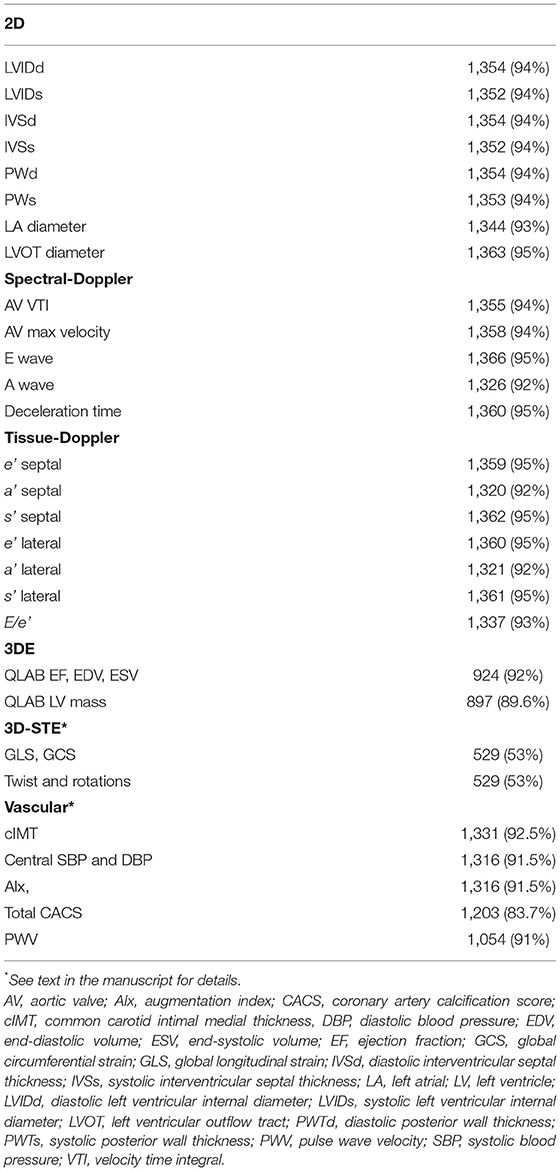- 1Department of Cardiac Technology, College of Applied Medical Sciences, Imam Abdulrahman Bin Faisal University, Dammam, Saudi Arabia
- 2MRC Unit for Lifelong Health and Ageing, Department of Population Science & Experimental Medicine, UCL Institute of Cardiovascular Science, University College London, London, United Kingdom
- 3Department of Basic Science, Prince Sultan bin Abdulaziz College for Emergency Medical Services, King Saud University, Riyadh, Saudi Arabia
- 4National Heart & Lung Institute, Imperial College London and Imperial College Healthcare NHS Trust, Hammersmith Hospital, London, United Kingdom
- 5Cardio-Oncology Service, Department of Cardiology, Barts Heart Centre, Barts Health NHS Trust, St Bartholomew's Hospital, London, United Kingdom
- 6Cardio-Oncology Service, Department of Cardiology, University College London Hospital, London, United Kingdom
by Al Saikhan, L., Alobaida, M., Bhuva, A., Chaturvedi, N., Heasman, J., Hughes, A. D., Jones, S., Eastwood, S., Manisty, C., March, K., Ghosh, A. K., Mayet, J., Oguntade, A., Tillin, T., Williams, S., Wright, A., and Park, C. (2020). Front. Cardiovasc. Med. 7:591946. doi: 10.3389/fcvm.2020.591946
In the original article, there was a numerical error in the legend for Figure 2 as published. The correct legend appears below.
3D dataset image quality score stratified by ethnicity in the overall SABRE population [N = 1,001, (A)] and among men [N = 768, (B)] and women [N = 233, (C)] participants. Numbers are percentages.
In the original article, there was a numerical error for some measures in Table 4 as published. The corrected Table 4 appears below.
In the original article, there was a numerical error in Figure 1A as published. The corrected Figure 1A appears below.
In the original article, there was an error. A correction has been made to Abstract, Results:
Conventional echocardiography and all vascular measurements showed high feasibility (>90% analyzable of clinic attendees), but 3D-echocardiography (3DE) and 3D-STE were less feasible (71% 3DE acquisition feasibility and 38% 3D-STE feasibility of clinic attendees).
In the original article, there was an error. A correction has been made to Results, Echocardiography, Paragraph Number 1:
3DE was acquired in 71% of all clinic attendees and, using QLAB, 924 (92%) had successful volumetric analysis and 897 (89.6%) had LV mass calculated. The difference in these numbers reflects difficulties in tracking the epicardium compared to the endocardium. Fifty three percent of those who had 3DE datasets had 3D deformation measurements by TomTec.
In the original article, there was an error. A correction has been made to Results, Echocardiography, Paragraph Number 2:
Broadly similar trends were observed in men (P < 0.0001, n = 768) and women (P = 0.005, n = 233); however, in South Asians, there were more women with unreadable 3D images compared to men (67 vs. 58%, Figure 2).
In the original article, there was an error. A correction has been made to Discussion, Paragraph Number 1:
By contrast, 3DE had ~71% acquisition feasibility, while 3D-STE feasibility was highly influenced by image quality and only half of the datasets could be analyzed.
The authors apologize for this error and state that this does not change the scientific conclusions of the article in any way. The original article has been updated.
Publisher's Note
All claims expressed in this article are solely those of the authors and do not necessarily represent those of their affiliated organizations, or those of the publisher, the editors and the reviewers. Any product that may be evaluated in this article, or claim that may be made by its manufacturer, is not guaranteed or endorsed by the publisher.
Keywords: population-based, cardiovascular, imaging, echocardiography, vascular, feasibility, reproducibility
Citation: Al Saikhan L, Alobaida M, Bhuva A, Chaturvedi N, Heasman J, Hughes AD, Jones S, Eastwood S, Manisty C, March K, Ghosh AK, Mayet J, Oguntade A, Tillin T, Williams S, Wright A and Park C (2021) Corrigendum: Imaging Protocol, Feasibility, and Reproducibility of Cardiovascular Phenotyping in a Large Tri-Ethnic Population-Based Study of Older People: The Southall and Brent Revisited (SABRE) Study. Front. Cardiovasc. Med. 8:769050. doi: 10.3389/fcvm.2021.769050
Received: 01 September 2021; Accepted: 11 October 2021;
Published: 04 November 2021.
Edited by:
Sebastian Kelle, Deutsches Herzzentrum Berlin, GermanyReviewed by:
Matthias Schneider, Charité – Universitätsmedizin Berlin, GermanyAllison G. Hays, Johns Hopkins University, United States
Copyright © 2021 Al Saikhan, Alobaida, Bhuva, Chaturvedi, Heasman, Hughes, Jones, Eastwood, Manisty, March, Ghosh, Mayet, Oguntade, Tillin, Williams, Wright and Park. This is an open-access article distributed under the terms of the Creative Commons Attribution License (CC BY). The use, distribution or reproduction in other forums is permitted, provided the original author(s) and the copyright owner(s) are credited and that the original publication in this journal is cited, in accordance with accepted academic practice. No use, distribution or reproduction is permitted which does not comply with these terms.
*Correspondence: Lamia Al Saikhan, bGthbHNhaWtoYW5AaWF1LmVkdS5zYQ==
 Lamia Al Saikhan
Lamia Al Saikhan Muath Alobaida2,3
Muath Alobaida2,3 Anish Bhuva
Anish Bhuva Alun D. Hughes
Alun D. Hughes Siana Jones
Siana Jones Charlotte Manisty
Charlotte Manisty Therese Tillin
Therese Tillin Chloe Park
Chloe Park
